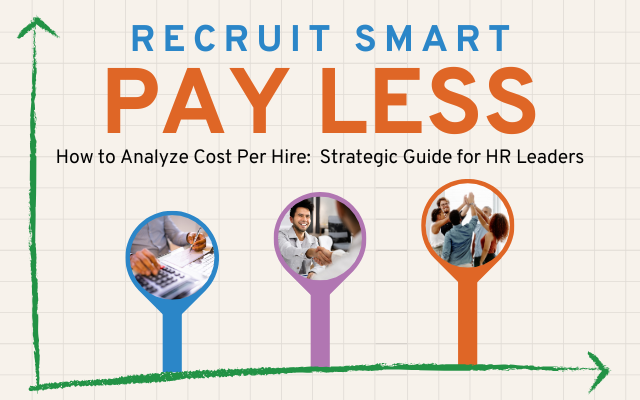Hiring the right talent is one of the most strategic investments a company can make. But with talent acquisition costs rising, HR leaders must take a data-driven approach to understand and optimize their cost per hire (CPH). By leveraging analytics, technology, and strategic workforce planning, organizations can achieve a high return on hiring investments while maintaining a competitive edge.
In this guide, we’ll explore how to calculate cost per hire accurately, industry benchmarks, and practical ways to drive cost-effective recruitment without sacrificing the quality of talent acquisition.
What is Cost Per Hire and Why Does It Matter?
Cost per hire is a key HR metric that quantifies the total expenses incurred when hiring a new employee. It reflects the efficiency of your recruiting process, helps identify cost-saving opportunities, and informs strategic decisions to enhance workforce planning. Understanding CPH enables HR leaders to align hiring budgets with business goals and demonstrate the tangible impact of talent acquisition strategy on the organization’s bottom line.
How to Calculate Cost Per Hire
A precise calculation ensures transparency in recruitment spending. The industry-standard formula is:
CPH = (Total Internal Recruiting Costs + Total External Recruiting Costs) / Total Number of Hires
Key Components of Hiring Costs
- Internal Recruiting Costs:
- Salaries of talent acquisition professionals
- Employee referral program incentives
- Training and onboarding resources
- HR technology subscriptions (ATS, CRM, etc.)
- External Recruiting Costs:
- Job board postings (LinkedIn, indeed, Glassdoor)
- Recruitment marketing and employer branding initiatives
- Agency and headhunter fees
- Background checks and pre-employment assessments
By tracking these costs over time, HR teams can develop a data-backed hiring budget that optimizes recruitment spend.
Industry Benchmarks: What is a Good Cost Per Hire?
According to the Society for Human Resource Management (SHRM):
- The average cost per hire across industries is $4,700.
- For executive roles, this figure can exceed $20,000 due to extended recruitment cycles.
- Companies with strong employer branding reduce CPH by up to 50%, as they attract more organic applicants rather than relying on paid recruitment efforts.
Comparing your organization’s CPH with industry benchmarks provides a performance baseline to assess hiring efficiency and identify cost-reduction opportunities.
How to Reduce Cost Per Hire Without Compromising Quality
Reducing CPH requires a strategic shift in recruitment operations. Here’s how HR leaders can achieve cost-effective hiring while maintaining top-tier talent acquisition:
- Optimize Recruitment Marketing Strategies
- Leverage content marketing for employer branding—blogs, behind-the-scenes videos, and employee testimonials.
- Enhance job descriptions with SEO keywords to improve visibility and attract qualified candidates organically.
- Leverage AI and Automation in Hiring
- Implement AI-driven recruitment tools to streamline resume screening and candidate matching.
- Automate interview scheduling and pre-screening assessments to reduce recruiter workload.
- Prioritize Employee Referrals
- Referral hires are faster to onboard and more cost-effective, reducing external advertising costs.
- Structured referral incentive programs can decrease CPH by up to 40%.
- Build a Robust Talent Pipeline
- Engage with potential candidates before positions become available.
- Utilize a talent CRM to maintain relationships with past applicants and passive candidates.
- Enhance Internal Mobility Programs
- Identify high-potential employees and invest in upskilling to promote from within.
- Internal hires often cost less than external hires and ramp up faster.
- Use Data Analytics to Drive Hiring Decisions
- Track cost per hire trends over time to forecast recruitment budgets effectively.
- Identify high-performing sourcing channels (job boards, referrals, social recruiting) and double down on ROI-positive recruitment efforts.
The Future of Cost Per Hire: Data-Driven Hiring Strategies
The HR landscape is evolving rapidly, and data-backed decision-making is now non-negotiable. As we move into a future where AI-driven workforce analytics and predictive hiring models become the norm, organizations that proactively refine their recruitment strategies will gain a competitive talent advantage.
Final Takeaways
- Cost per hire is a critical talent acquisition metric that impacts organizational profitability.
- HR leaders must track both internal and external hiring costs to optimize recruitment spend.
- Employer branding, recruitment automation, and internal mobility are key levers for reducing CPH.
- Future-proof your hiring strategy by integrating data-driven hiring decisions and AI-powered recruitment tools.

